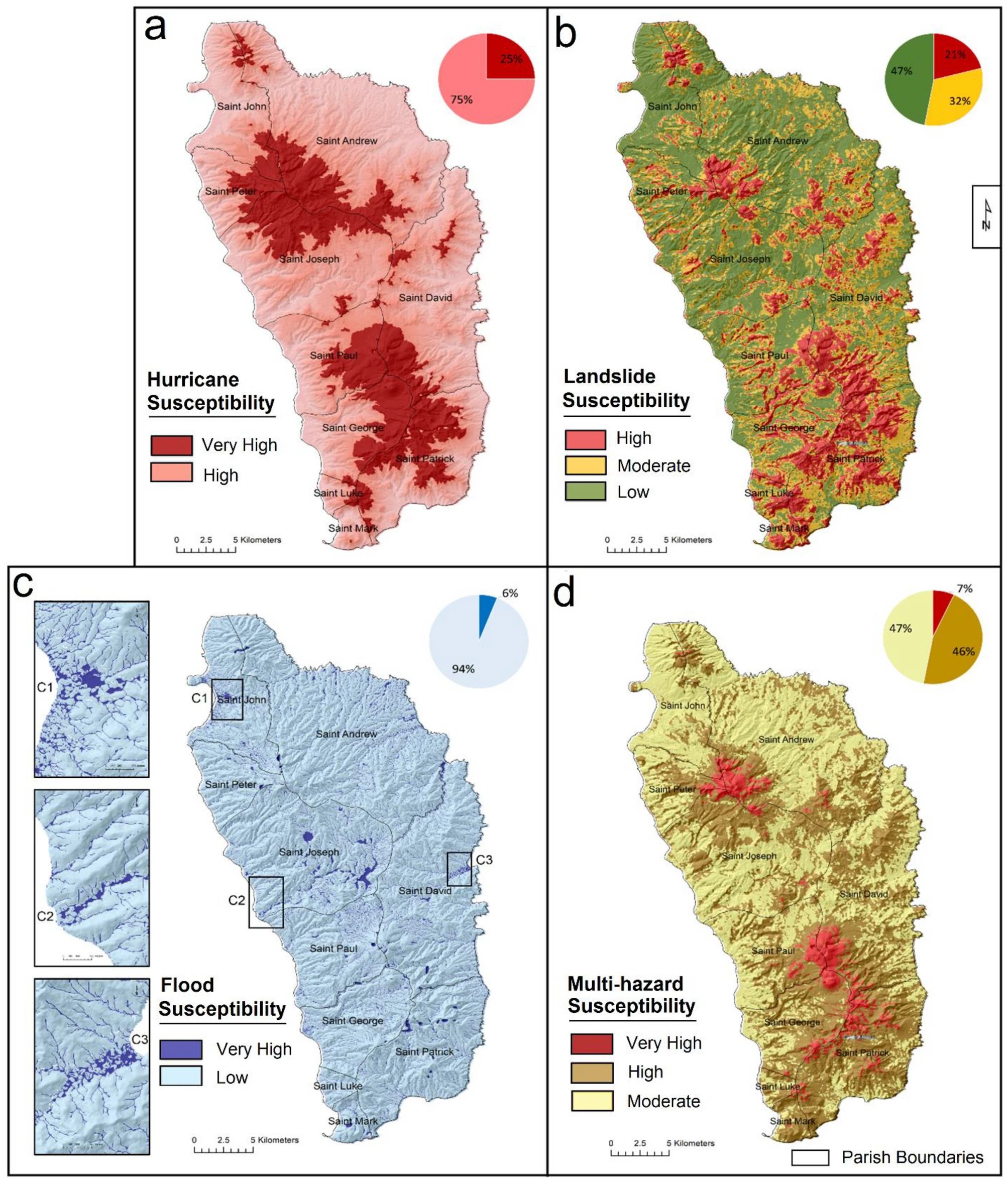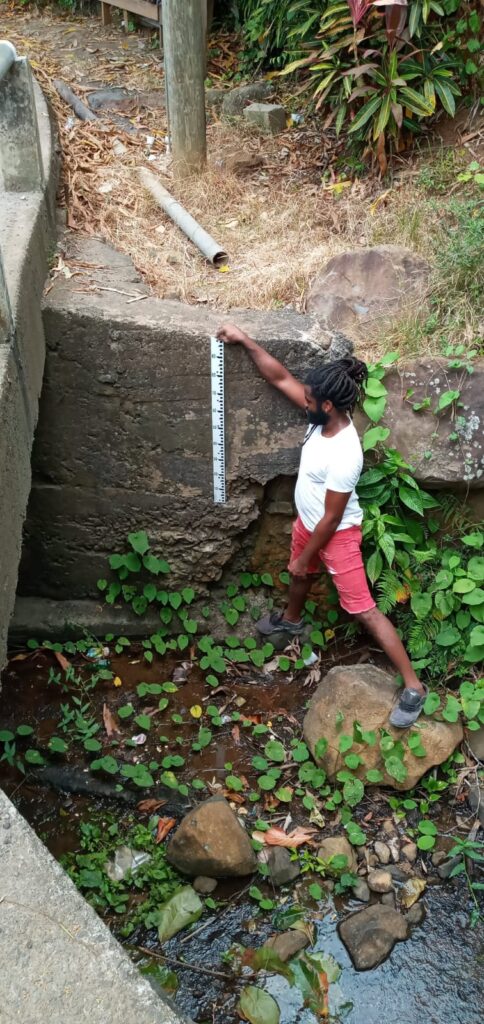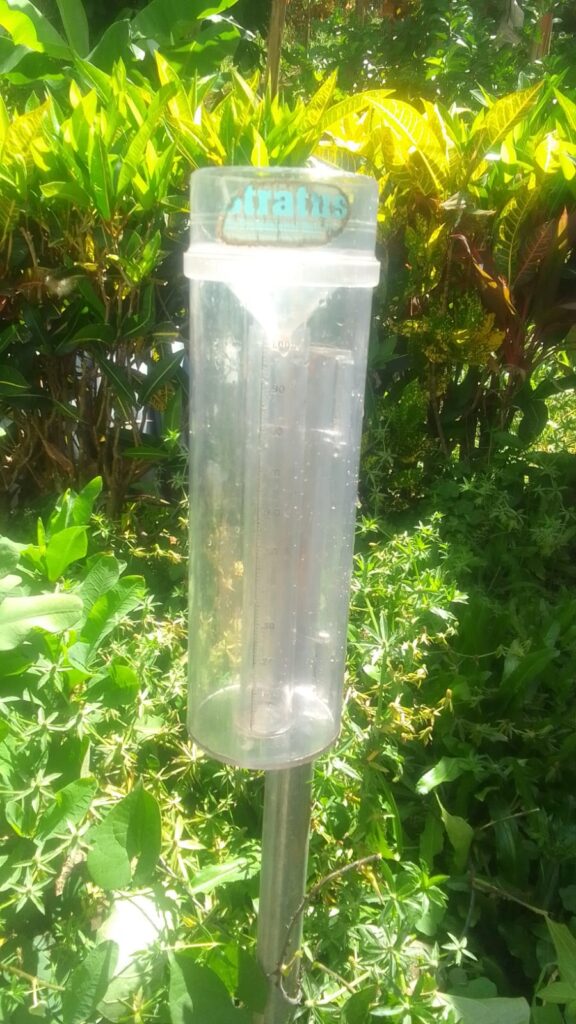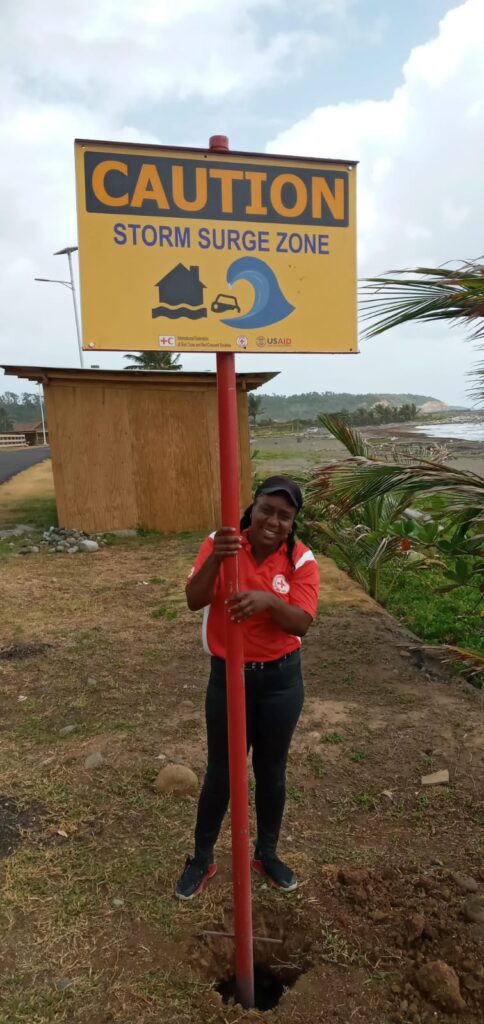Dominica Building Resilience Through Community Early Warning Systems
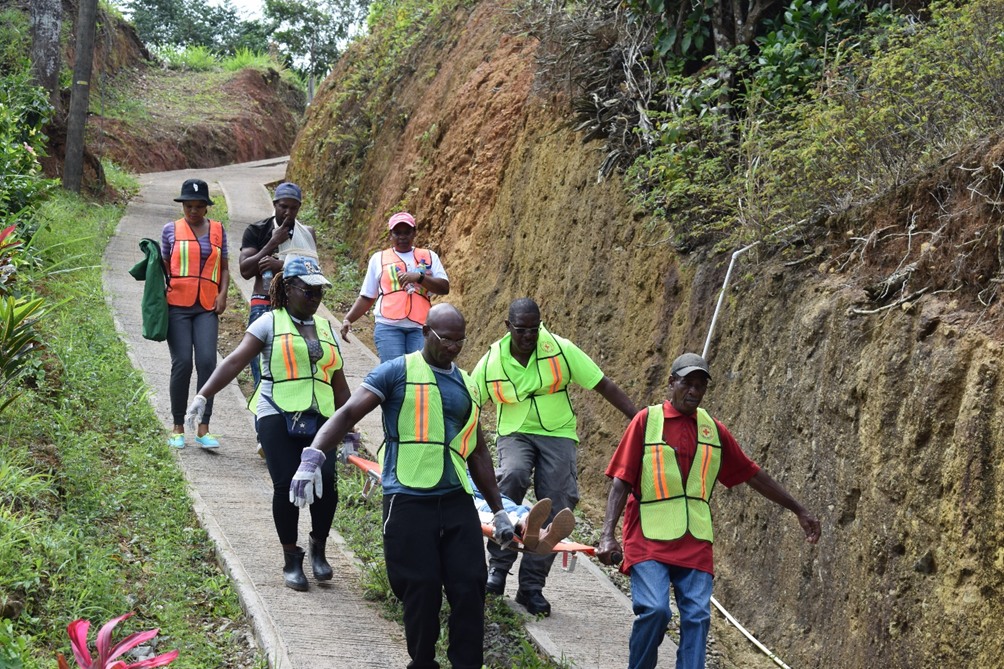
Setting the Scene
Dominica is highly vulnerable to the effects of climate change, the impacts of which have already been experienced when the island suffered a direct hit by category five Hurricane Maria in September 2017, which wiped out 226% of its gross domestic product. Two years later, Tropical Storm Erika passed over the island and destroyed an entire village.
Dominica is still recovering from 2017’s Hurricane Maria that destroyed natural resources. As a result, formerly forested areas are prone to landslides and slips because of the absence of roots to stabilize soils.
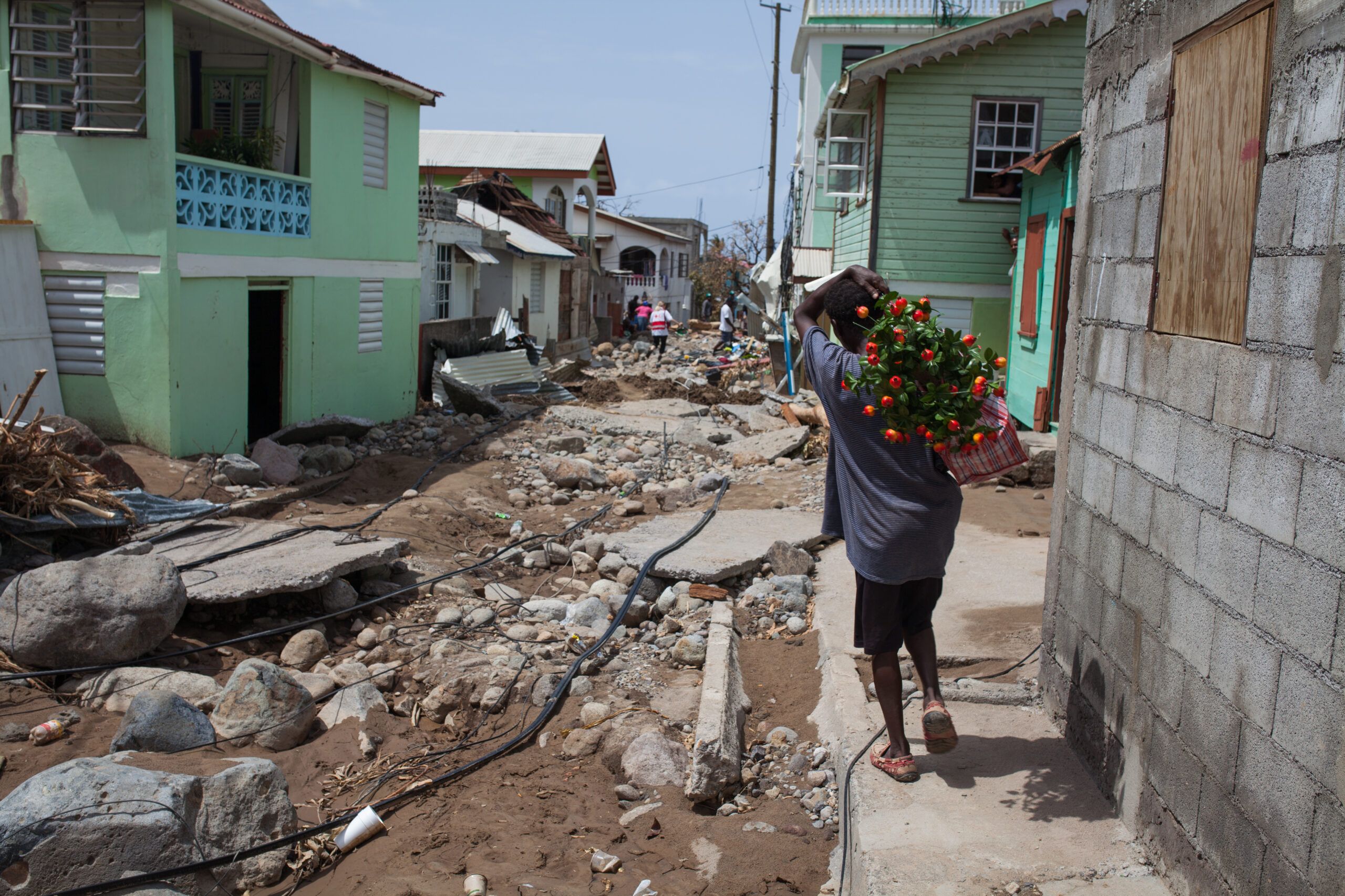
While Dominica continues to be at risk, Dominica Red Cross Society remains committed to improving community resilience and preparedness to withstand the hazardous events. The Dominica Red Cross works with communities to establish and train disaster response teams. Early warning system (EWS) work falls under disaster response team tasks. Some communities have district emergency committees or village councils, so the Dominica Red Cross works with them to train as community-based response teams.
The Community Early Warning Systems (CEWS) initiative commenced in 2021/2022 by Dominica Red Cross as a part of the Community Disaster Response Team (CDRT) project, funded by USAID's Office of U.S. Foreign Disaster Assistance (USAID/OFDA) and facilitated through International Federation of Red Cross and Red Crescent Societies (IFRC).
Community Early Warning System (CEWS) aimed to strengthen community resilience in the face of natural hazards, particularly floods. This case study delves into the process, challenges, successes, and lessons learned from implementing CEWS in three communities: Soufriere, Wotten Waven, and Marigot.
Linking CEWS to National EW Systems
In Dominica, the Office of Disaster Management (ODM) serves as the official authority responsible for issuing hazard alerts based on forecasts from the Meteorological Office. These alerts are communicated through various channels, including radio, telephone, social media, and a common practice of using bicycles to personally deliver information within communities. Informal networks, such as members of the village council (a non-governmental body) and the parliamentary representative, also play a role in disseminating warnings.
Last year, the Dominica Red Cross, in partnership with the government and other stakeholders, refined and adapted Public Awareness and Public Education (PAPE) messages — actionable hazard messages for communities to accompany alerts, offering guidance on preparedness and safety during disasters. The ODM compiled and reviewed these messages for various hazards.
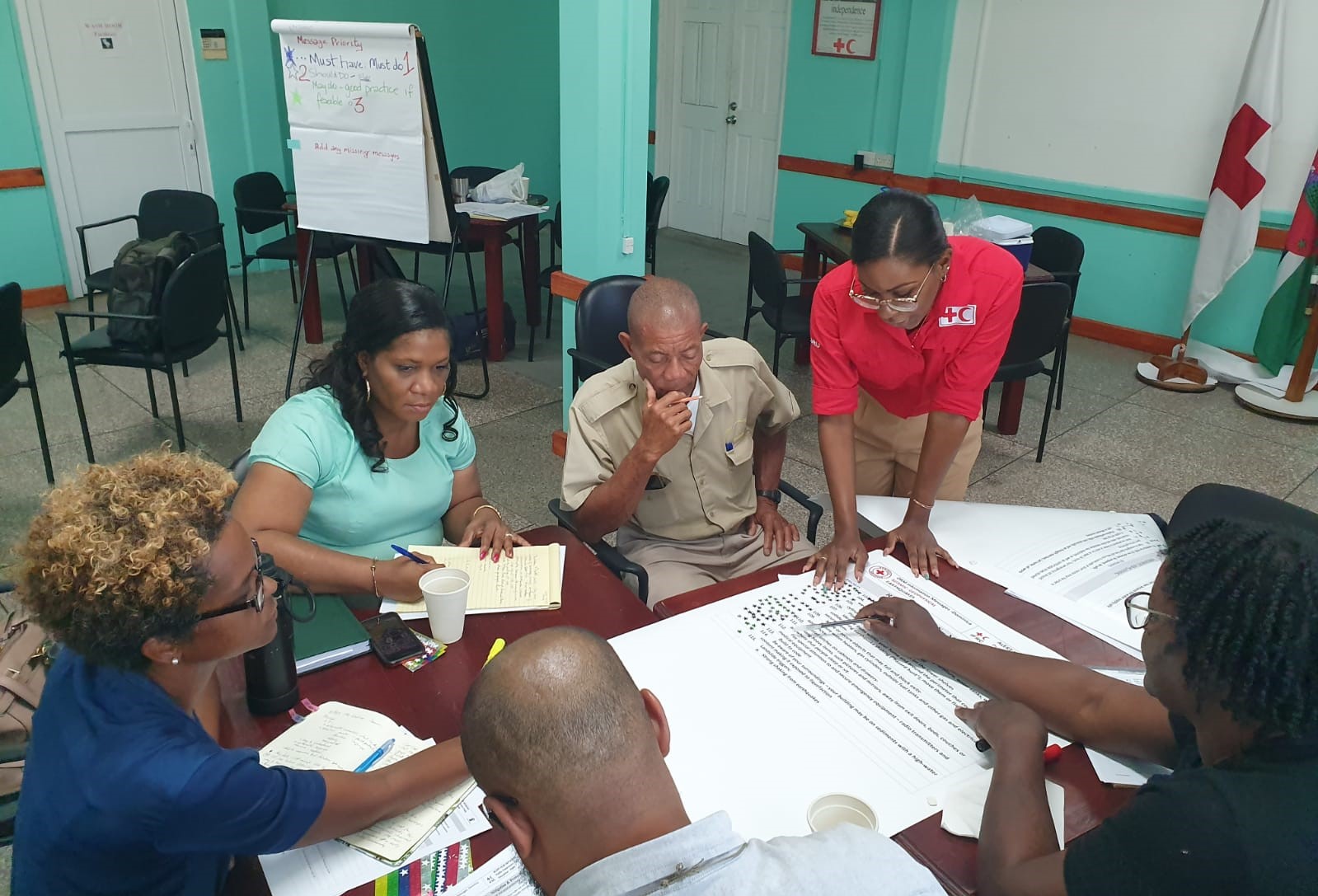
Community Engagement in CEWS
The selection of communities for the installation of Community Early Warning Systems (CEWS) was based on a Vulnerability and Capacity Assessment (VCA). The Dominica Red Cross has a long-standing history of conducting VCA in communities. The VCA has been conducted in Dominica since the 1990s.
VCA is a risk assessment tool and process supported by the International Federation that can help communities improve their understanding of their own vulnerability. The needs of people at greatest risk of natural and man-made disasters can be identified. As a result, more appropriate actions can be implemented to assist them cope with and recover from these hazards.
Through VCA, it is clear that Dominica has faced and continues to face flooding in many parts of the country. The assessment, in three communities – Soufriere, Wotten Waven and Marigot, prioritized areas susceptible to heavy rainfall and flooding. Communities were chosen based on several criteria, including geographic location, economic activities, vulnerability to hazards, the frequency of these hazards, and information provided by the Government through the Climate Resilient Executing Agency of Dominica.
The installation of Community Early Warning Systems (CEWS) involved collaboration with local government entities and communication with the Office of Disaster Management, thereby enhancing local disaster preparedness and planning efforts. The operation of CEWS was informed by data from the Meteorological Office and the findings from Vulnerability and Capacity Assessments (VCA), underscoring the importance of reliable information for the effectiveness of Early Warning Systems.
The establishment of CEWS took approximately 3-4 months, involving coordination with various stakeholders, and ensuring community engagement. As part of the project being implemented, meetings were held with various community groups to identify potential participants. Community members were selected for specialized training in Community Disaster Response Teams (CDRTs), with groups of 20-25 individuals from each community taking part. The Dominica Red Cross collaborated with government departments, which, in turn, worked alongside village councils and/or established local groups to identify potential trainees. The village council and local groups encouraged interested individuals, regardless of age, to sign up for the training. Those who enrolled were trained to become CDRT members. Based on the interests and geographical proximity, such as living near water resources/ rivers, participants were assigned roles like monitoring equipment and reporting findings.
This led to training of volunteers and community members. Training programs such as observing rain-water levels, methods to install equipment and repair/ change equipment parts were held to enhance trainee’s skills in monitoring the community early warning system for flooding. In addition, trainees were trained to form proper messages and disseminate it to increase the effectiveness of messages being transferred. However, gaps remain in refresher training, equipment maintenance (in this case, the rain gauge), and raising awareness about community early warning systems.
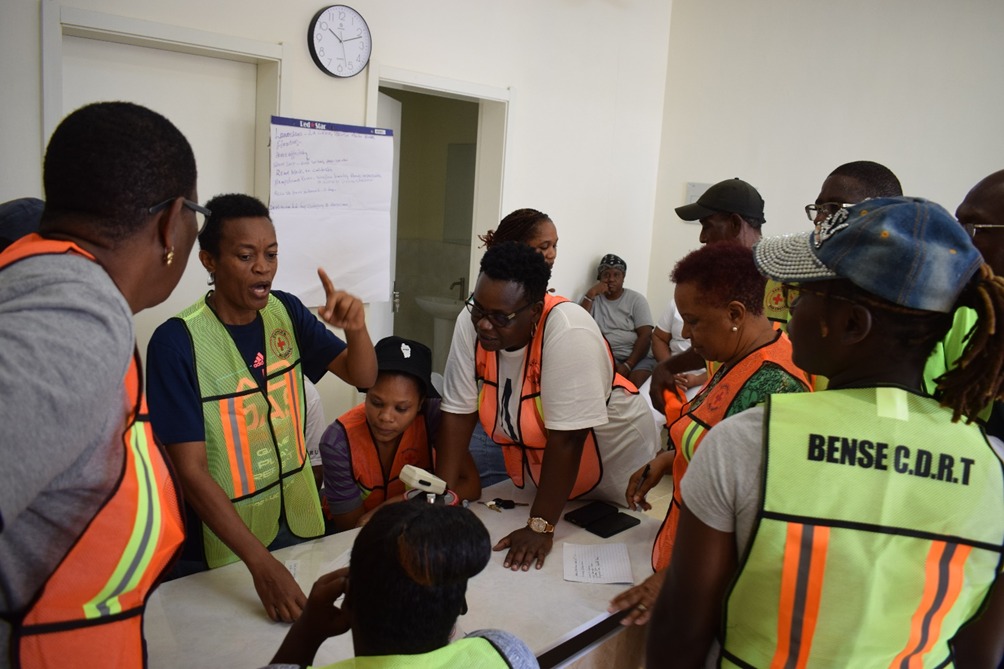
Implementation and Challenges
During the training of Community Disaster Response Teams (CDRTs) led by Dominica Red Cross, key hazards such as floods, landslides, and hurricanes were identified, and strategies for mitigation were discussed. Flooding, and particularly flash flooding, were highlighted as major hazards affecting the communities. Recognizing the urgent need for an effective flood warning system, the Dominica Red Cross prioritized the establishment of such a system. As part of broader efforts to enhance hazard warning systems, the International Federation of Red Cross and Red Crescent Societies (IFRC) introduced Community Early Warning Systems (CEWS) in the Caribbean. These systems were subsequently installed in the villages of Soufriere, Wotten Waven, and Marigot in Dominica.
The installation of CEWS to mitigate flooding involved collaborative efforts, including identifying suitable locations for the Early Warning Systems (EWS) in consultation with the community members, Meteorological Office, and local authorities. The Dominica Red Cross worked with the Meteorological Office, Office of Disaster Management (ODM) and a local water company along with community members to identify the location for CEWS. A rain gauge along with a measuring stick was installed on the side of the river wall, an instrument which measures the level of rainwater when it rains. The rain gauge allows for if a rise in water level was detected, the trained community members would initiate the alert process, particularly focusing on the residents living near rivers or in lower downstream areas through telephone or by a “runner” method where the designated community member informs the next community member, ensuring the warning reaches all community members efficiently.
However, the challenge persists in this method of communication to rely on residence to pass the information. Therefore, the most common practice is to use direct phone calls to inform at-risk residents of potential danger. This collaborative effort between Dominica Red Cross, government agencies, and the local community has been instrumental in enhancing early warning and response capabilities. It has significance in improving community resilience against natural hazards.
CEWS in Action: Life-Saving Impact in Marigot, Dominica
The Community Early Warning System (CEWS) continues to operate in Marigot, managed by the local Red Cross branch. In collaboration with community groups, such as the disaster committee and village council members, hazards are carefully monitored. Specifically, a Red Cross-designated individual oversees the CEWS. Trained Community Disaster Response Teams (CDRTs), along with Red Cross volunteers and staff, play key roles in the system’s effectiveness.
During heavy rainfall events, the CEWS has proven to be a life-saving tool, successfully preventing loss of life due to flooding. Learn more about its impact below.
Recommendations and Opportunities
The Dominica Red Cross encourages the replication of CEWS both nationally and globally, emphasizing its importance in vulnerable communities. It aids in building resilience and enhancing response which results in saving lives in the communities. Sandra Charter-Rolle, Director of Dominica Red Cross, further suggested future improvement that includes enhanced partnership collaboration between Dominica Red Cross and government agencies, sustained training, and leveraging technology for more effective early warning dissemination.
Recalling one of the incidents, Charter-Rolle shared, “Marigot, situated in the northeastern part of Dominica, is susceptible to heavy rainfall and flooding. During a period of heavy rainfall, a community member designated by CDRT to monitor the EWS in Marigot, a small village consisting of about 2600 residents in Dominica, received a critical alert. The EWS indicated an imminent flood risk near the river, prompting the community members to take swift action.
The community member immediately alerted residents via telephone living in the vicinity of the river, including one resident who was particularly vulnerable due to their proximity to the water. With the help of CEWS, the resident was safely evacuated to a designated shelter until the rainfall subsided. "
Thanks to the timely intervention facilitated by CEWS, the resident’s life was saved, and potential harm from the flood was mitigated. The effectiveness of the EWS in providing early warnings enabled the community to respond proactively to the imminent threat.”
Key Lessons Learned
With climate change, communities are more prone to hazards than before. We need to prepare ourselves and optimize the resources such as the Community Early Warning System. With that, through this case study, here are some of the key learnings of the messages and practices:

